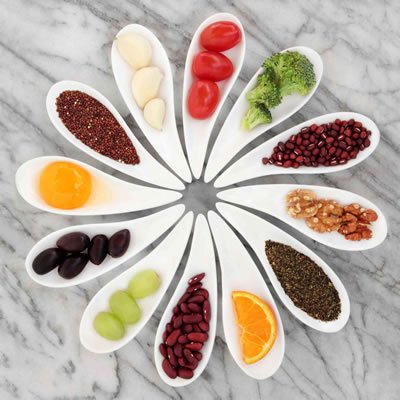Origin
The anti-oxidizing capacity of vitamin E concentrates from wheat germ by controlling the progress of oxidation in tissues of animals that consumed a high-fat diet was first reported by Evans and Bishop in 1923.1
BHA and BHT were first synthesized in 1940s. Their utilization in foods was approved in 1947 and 1954. Despite their GRAS status, consumers’ concern about their potential carcinogenicity has created a demand for alternative natural antioxidants.
Function
Antioxidants work by interrupting free radicals chain reactions. In the human body, they are critical for maintaining optimal health and preventing of free radicals damage.
In food systems, antioxidants can prevent lipid oxidation, chelate prooxidative metals, quench singlet oxygen and photosensitizers as well as inactivate lipoxygenases. These functions are critical for preserving the quality of foods and extending their shelf life.
Nutrition
The main health benefits of antioxidants include:3,4
- Inhibition of lipid peroxidation
- Extending shelf life
- Anticarcinogenic
- Reduction of incidence of cardiovascular diseases
- Anti-inflammation
Application
Lipid-containing foods and bakery products are formulated with various antioxidants, often in combination, for maximum effectiveness.5 Here is a list of food grade antioxidants and their characteristics:6
| Natural antioxidants | Max limit | Advantages | Disadvantages |
| Ascorbyl Palmitate | 0.02% |
|
|
| Citric, gallic and tartaric acid | 0.01% | ||
| Ascorbic acid | 1.0 g/kg flour |
| Synthetic Antioxidants | Max limit | Advantages | Disadvantages |
| TBHQ | 0.02% (formula mix) |
|
|
| BHT | 0.02% (based on fat) | ||
| BHA | 0.02%( based on fat) |
Regulation
Antioxidants are regulated in food labeling by FDA (21CFR101.54).7
References
- Evans, H. M. and Bishop, K. S. Existence of a hitherto unknown dietary factor essential for reproduction. J. Am. Med. Assoc. 1923, 81: 889 – 892.
- Xu, J., Wang, W., and Li, Y. Douph properties, bread quality, and associated interactions with added phenolic compounds: A review. Journal of Functional Foods. 52 (2019): 629-639.
- Xu, J., Wang, W., and Li, Y. Corn: Bioactive Factors and Processing Technology for Cereal Foods. Springer. 2019. Pp: 33-54.
- Sohaib, M,m Anjum, F. M., Sahar, A., Arshad, M. S., Rahman, U. U., Imran, A, and Hussain, S. Antioxidant proteins and peptides to enhance the oxidative stability of meat and meat procedure: A comprehensive review. International Journal of Food Properties. 20 (2017): 2581-2593.
- Nanditha, B., and Prabhasankar, P. Antioxidants in bakery products: a review[J]. Critical Reviews in Food Science and Nutrition. 49 (2008): 1-27.
- “CFR-Code of Federal Regulations 21CFR101.54”. Accessdata.fad.gov. April 01.2019. https://www.accessdata.fda.gov/scripts/cdrh/cfdocs/cfcfr/CFRSearch.cfm?fr=101.54.Accessed. Nov 18.2019.

